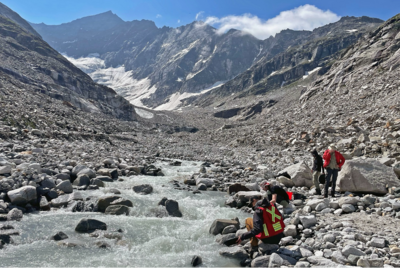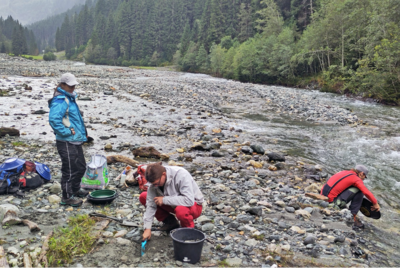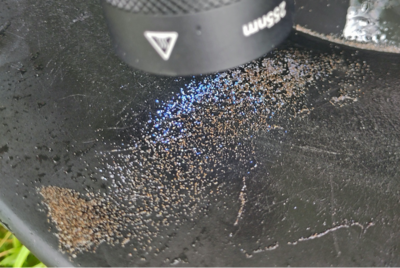HeavyMin - Analysis of heavy minerals as indicators for raw material types and prospectivity with a focus on tungsten

The HeavyMin project is a collaboration between the Technical University of Leoben and GeoSphere Austria, supporting the exploration initiative of the Federal Ministry of Finance (BMF) by conducting heavy mineral sampling of stream and glacial sediments in selected regions. The objective is to obtain mineralogical and chemical data from so-called indicator minerals to develop exploration vectors and verify potential mineral anomalies. Heavy minerals such as scheelite, magnetite, zircon, rutile, chromite, cassiterite and phosphates accumulate in sediments and provide valuable information about potential deposits based on their chemical composition.
The analysis of such minerals is considered a key exploration method worldwide for raw materials such as tungsten, copper, gold and diamonds. Magnetite, pyrite, scheelite and apatite are particularly suitable as indicator minerals because of their high abundance and increased incorporation of various trace elements. Furthermore, specific ore minerals (e.g., cassiterite, chromite or sulfide minerals containing nickel and platinum group elements) can specifically point to certain deposit types.
The project's regional focus is on the central Tauern Window, where tungsten – in the form of scheelite (CaWO4) – plays a key role. Copper, molybdenum and other metal occurrences are also known in this area. By linking regional data with information from international deposits, the scheelite-based exploration tool will be refined. This tool is being tested within the frame of the HeavyMin project and intended to enable the early detection of areas with an economically interesting tungsten potential.
Tungsten is of great strategic importance to the European Union and has been listed as a critical raw material since 2011 and highlighted in the Critical Raw Materials Act. As the European supply is heavily dependent on imports – despite the Austrian tungsten deposit in the Felbertal – the project is intended to contribute to reducing the supply risk in the long term.




